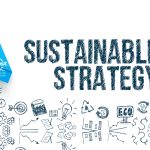Understanding the Circular Economy Core Concepts
The Circular Economy Core Concepts
The current global economy is built on a “take-make-waste” industrial model, and look where it’s gotten us: pollution, contamination, and depleted natural resources are everywhere. Our oceans are full of plastic. Our waters are full of harmful chemicals. Farmlands are ruined by over-production. It’s time for a change – not just in how products are manufactured, but what happens to them after they’ve been used.
Path to Circular Economy
Since the invention of the steam engine in the 1600s, global manufacturing has changed the way products are made and how resources are used. This “linear” production cycle has led to an economic model that is devoid of sustainability. Resources are used to make products that are consumed, and then those products are thrown away. The resulting pollution goes nowhere. In fact, it cripples the very natural resources that are required to make more of the same product.
Three Principles of Circularity
This is where the concept of a circular economy comes in. In a circular economy, nothing goes to waste. Every step of a product’s life cycle is designed to support the next step.
Design out Waste
The first step to circularity begins before a product is even made. The idea of “designing out waste” means that manufacturers are thinking past the consumption of their product and focusing on what happens when the product has reached the end of its use cycle. For instance, Carlsberg beer is working on a biodegradable beer bottle made from wood fiber. Currently, 45% of Carlsberg’s CO2 emissions come from the process of creating their packaging – namely, beer bottles. By using a biodegradable option, the company not only lowers their carbon footprint, but they also offer consumers a better alternative to glass bottles.
Keep Materials in Use
Many companies are urging consumers to do their part to recycle the products they use. In the end, the key to a circular economy’s success relies on consumers doing their part to recycle. One example of this would be companies like HP designing their ink cartridges specifically to be recycled at the end of their use. They collect ink cartridges from retailers and use their components to make new ones. This not only cuts down on waste, but it also lowers the cost of refurbished ink cartridges.
Regenerate Natural Resources
The food and beverage industry is always looking for a way to reduce waste, but the waste they do produce is oftentimes just landfilled anyway. Part of a circular economy means finding a use for everything, including trash. New technologies like food de-packaging are closing the loop on circularity by allowing packaged food to be separated and ground up into compostable waste that can be used to support the farms that supply the raw materials that are being processed.
Closing the Loop On The Circular Economy
The concept of a circular economy is one that’s gaining traction across many industries, across the globe. Companies realize that just reducing waste in the manufacturing process isn’t enough – waste needs to be eliminated PAST consumption of a product. With organizations like the Ellen MacArthur Foundation leading the way, the path to circularity is becoming a reality.









